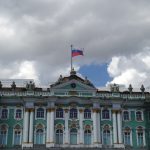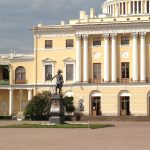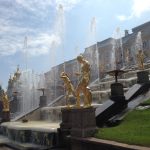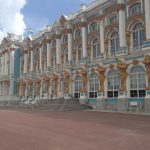Generally speaking, it seems logical that the Soviet period of Russian history has had the longest lasting effect on the stereotypical American perspective of the current Russian Federation, purely because it represents, for many Americans, the most recent characterization of the region. However, it’s still very interesting to me — especially after witnessing the Petersburg’s grandeur — that Americans don’t seem to characterize the Russian state with allusions to its monarchical past (at least in the same way I often feel France is associated with the Sun King and Versailles, for example). Thus far, I’ve had the opportunity to visit three of Petersburg’s suburban palaces — Peterhof, Pavlovsk, and the Catherine Palace — and, of course, the Hermitage museum which is located in the Winter Palace in the city center. Due to extraordinary restoration efforts following the Second World War, the suburban palaces truly represent, at least in my opinion, both the overwhelming domestic power and international influence of the Russian monarchy. For me, the palaces manage to evoke an entirely awe-inspiring experience coupled with a touch of remorse over the amount of time, resources, and energy that was devoted to their completion and restoration. Discussing this idea recently with a professor of literature at Brown, he commented on the necessity of these palaces — which should really be seen more as monuments — for the Russian national consciousness. Even in my own, personal understanding of their place in Russian society, the palaces seem to serve as a rallying point for people in terms of national pride and culture. Seemingly, at least for the Russians I’ve come to know, these monarchical remnants are a point of pride, in so far as they bring hoards and hoards of tourists from around the world in admiration of what are viewed as “national treasures.”







